Key Takeaways
1. Shift from Leader-Follower to Leader-Leader for Empowered Teams
"The leader-leader structure is fundamentally different from the leader-follower structure. At its core is the belief that we can all be leaders and, in fact, it's best when we all are leaders."
Empower everyone as leaders. The traditional leader-follower model limits an organization's potential by relying on a single decision-maker. By shifting to a leader-leader approach, organizations can tap into the full intellectual capacity of every team member. This transformation involves:
- Distributing decision-making authority throughout the organization
- Encouraging initiative and ownership at all levels
- Fostering a sense of responsibility and accountability in every team member
The result is a more resilient, adaptable, and high-performing organization where everyone contributes their best ideas and efforts.
2. Divest Control to Increase Organizational Competence
"Control without competence is chaos."
Balance control and competence. Divesting control is not about abdication but about strategic delegation. To successfully implement this:
- Identify decisions that can be pushed to lower levels in the organization
- Provide necessary training and resources to build competence
- Gradually increase decision-making authority as competence grows
This approach creates a virtuous cycle where increased responsibility leads to greater competence, which in turn allows for more control to be divested. The key is to maintain a balance, ensuring that those making decisions have the necessary skills and knowledge to do so effectively.
3. Take Deliberate Action to Reduce Errors and Improve Performance
"Take deliberate action was the single most powerful mechanism that we implemented for reducing mistakes and making Santa Fe operationally excellent."
Act with intention. Deliberate action involves pausing before any significant action, vocalizing and gesturing toward what you're about to do, and then executing. This practice:
- Reduces automatic mistakes
- Allows for team intervention before errors occur
- Improves overall situational awareness
By implementing deliberate action, organizations can significantly reduce errors, improve safety, and enhance overall performance. This mechanism is particularly crucial in high-stakes environments but can be adapted to various industries to promote thoughtful, intentional work.
4. Embrace Clarity Through Continuous Learning and Communication
"We learn (everywhere, all the time)."
Foster a learning culture. Continuous learning and clear communication are essential for organizational clarity. To achieve this:
- Encourage curiosity and questions at all levels
- Implement mechanisms for sharing knowledge and experiences
- Regularly communicate organizational goals and strategies
By making learning a core part of the organizational culture, teams become more adaptable, innovative, and aligned with the organization's objectives. This approach also helps in breaking down silos and fostering a more collaborative work environment.
5. Foster a Culture of Trust and Responsibility
"Taking care of your people does not mean protecting them from the consequences of their own behavior."
Build trust through responsibility. A culture of trust and responsibility is fundamental to the leader-leader model. This involves:
- Giving team members the tools and authority to succeed
- Holding individuals accountable for their decisions and actions
- Supporting personal and professional growth
By fostering this culture, organizations create an environment where people feel valued, empowered, and motivated to contribute their best. This approach leads to higher job satisfaction, better retention, and improved overall performance.
6. Implement Mechanisms for Sustainable Leadership Change
"I was resolved to avoid this altogether. Instead of trying to change mind-sets and then change the way we acted, we would start acting differently and the new thinking would follow."
Act first, think later. To create lasting change in leadership style:
- Identify and implement specific mechanisms that embody the desired leadership approach
- Focus on changing behaviors rather than just attitudes
- Consistently reinforce new practices until they become habitual
Examples of mechanisms:
- "I intend to..." statements to encourage proactive thinking
- Deliberate action to reduce errors
- Immediate recognition to reinforce desired behaviors
By focusing on concrete actions and mechanisms, organizations can more effectively shift their leadership culture and sustain those changes over time.
7. Focus on Long-Term Excellence, Not Short-Term Metrics
"Focusing on avoiding errors takes our focus away from becoming truly exceptional."
Pursue excellence, not perfection. Shifting focus from error avoidance to excellence achievement:
- Encourages innovation and calculated risk-taking
- Motivates teams to strive for exceptional performance
- Creates a more positive and forward-thinking organizational culture
To implement this approach:
- Set ambitious, long-term goals that inspire excellence
- Celebrate successes and learn from failures
- Evaluate performance based on progress towards excellence, not just error reduction
This mindset shift can lead to breakthrough improvements and a more engaged, motivated workforce.
8. Encourage a Questioning Attitude Over Blind Obedience
"Do you want obedience or effectiveness?"
Value critical thinking. Encouraging a questioning attitude:
- Improves decision-making by considering multiple perspectives
- Enhances safety and performance by catching potential errors
- Fosters a culture of continuous improvement
To promote this:
- Explicitly encourage questions and alternative viewpoints
- Reward those who speak up with concerns or suggestions
- Model the behavior by questioning your own assumptions and decisions
This approach creates a more resilient organization capable of adapting to changing circumstances and avoiding groupthink.
9. Recognize and Reward Initiative Immediately
"USE IMMEDIATE RECOGNITION TO REINFORCE DESIRED BEHAVIORS is a mechanism for CLARITY."
Reinforce positive behaviors promptly. Immediate recognition:
- Clearly communicates what behaviors are valued
- Motivates continued excellent performance
- Strengthens the connection between actions and organizational goals
Implementation strategies:
- Develop a system for on-the-spot recognition
- Empower all levels of leadership to provide immediate positive feedback
- Ensure recognition is specific, sincere, and tied to organizational values
By making recognition timely and meaningful, organizations can more effectively shape their culture and drive desired behaviors.
10. Begin with the End in Mind for Personal and Organizational Growth
"BEGIN WITH THE END IN MIND is an important mechanism for ORGANIZATIONAL CLARITY."
Set clear, long-term objectives. Starting with the end goal in mind:
- Aligns individual and team efforts with organizational objectives
- Provides a clear direction for decision-making
- Motivates by connecting daily actions to larger purposes
Practical application:
- Have team members write their end-of-tour awards or performance evaluations
- Develop specific, measurable long-term goals for the organization
- Regularly review and adjust goals to ensure they remain relevant and inspiring
This approach ensures that everyone understands not just what they're doing, but why they're doing it, leading to more motivated and effective teams.
Last updated:
FAQ
What's Turn the Ship Around! about?
- Leadership Transformation: The book details Captain David Marquet's experience transforming the USS Santa Fe from a low-performing submarine to a top performer using a new leadership model.
- Leader-Leader Model: Marquet introduces the "Leader-Leader" model, which empowers all crew members to make decisions, contrasting with the traditional "Leader-Follower" model.
- Real-Life Application: The narrative is based on Marquet's real experiences in the U.S. Navy, offering practical strategies applicable in various organizational settings.
Why should I read Turn the Ship Around!?
- Empowerment Insights: The book provides insights into empowering employees at all levels, crucial for modern organizations.
- Practical Strategies: Readers will find actionable strategies, such as the "I intend to..." approach, encouraging proactive communication and ownership.
- Inspiring Story: Marquet's transformation of the Santa Fe is an inspiring story of leadership and resilience, appealing to those interested in improving leadership skills.
What are the key takeaways of Turn the Ship Around!?
- Shift to Leader-Leader: The book emphasizes shifting from a "Leader-Follower" to a "Leader-Leader" model, promoting shared responsibility.
- Control and Competence: Leaders should divest control while ensuring teams are competent and aligned with organizational goals.
- Cultural Change: It advocates for open communication and a focus on excellence rather than merely avoiding mistakes.
What are the best quotes from Turn the Ship Around! and what do they mean?
- "Leadership is a choice, not a position.": This quote encourages individuals to take initiative and act as leaders regardless of their formal title.
- "Don’t move information to authority, move authority to the information.": It promotes decision-making by those closest to the information, enhancing efficiency.
- "I intend to...": This phrase encourages proactive communication, shifting the mindset from waiting for orders to taking initiative.
What is the Leader-Leader model in Turn the Ship Around!?
- Empowerment Focus: The model empowers all members to take initiative and make decisions, contrasting with the Leader-Follower model.
- Shared Responsibility: Everyone is responsible for their actions, fostering ownership and accountability.
- Practical Implementation: Marquet provides mechanisms like the "I intend to..." approach to implement this model.
How does Captain Marquet suggest implementing change in Turn the Ship Around!?
- Start with Control: Divest control from leaders and distribute it among team members, trusting them to make decisions.
- Encourage Open Communication: Create an environment where team members feel comfortable sharing thoughts and ideas.
- Focus on Excellence: Shift focus from avoiding mistakes to striving for excellence, improving performance and satisfaction.
How does Marquet address the issue of employee disengagement in Turn the Ship Around!?
- Understanding Frustration: He highlights the frustration of employees whose ideas are stifled in hierarchical structures.
- Creating a Call to Action: Emphasizes motivating employees to engage and take ownership by recognizing their contributions.
- Building a Supportive Culture: Advocates for a culture that supports initiative and creativity, allowing employees to feel valued.
What mechanisms does Marquet suggest for fostering competence in Turn the Ship Around!?
- Training and Development: Ongoing training ensures team members are competent in their roles, with opportunities for skill enhancement.
- Clear Expectations: Clarity in goals and expectations helps employees align efforts and make informed decisions.
- Encouraging Initiative: Create an environment where employees feel empowered to take initiative and make decisions.
What is the significance of "Embrace the Inspectors" in Turn the Ship Around!?
- Open to Feedback: Encourages teams to welcome external scrutiny and feedback for improvement.
- Learning from Others: Inviting inspectors to share insights helps teams learn best practices and avoid past mistakes.
- Control Over Destiny: Embracing oversight empowers teams to view challenges as growth opportunities.
How does Marquet define "Take Deliberate Action"?
- Mindful Decision-Making: Involves pausing before tasks to ensure awareness of actions and consequences, reducing errors.
- Team Communication: Encourages vocalizing intentions before acting, fostering teamwork and mutual support.
- Error Prevention: This approach significantly reduced operational errors on the USS Santa Fe.
How can leaders implement the concepts from Turn the Ship Around! in their organizations?
- Assess Current Practices: Evaluate existing leadership models and identify areas for improvement.
- Foster a Culture of Learning: Promote continuous learning and improvement through feedback and training.
- Encourage Open Communication: Create an environment where team members feel comfortable sharing ideas and feedback.
What role does trust play in the leader-leader model?
- Foundation of Empowerment: Trust is essential for empowering individuals to take initiative and make decisions.
- Building Relationships: Open communication and transparency build trust, enhancing collaboration.
- Long-Term Success: Trust creates a positive work environment, leading to higher morale and retention rates.
Review Summary
Turn the Ship Around! receives high praise for its innovative approach to leadership. Readers appreciate Marquet's practical advice on empowering team members and fostering a leader-leader model. Many find the book engaging and applicable across various industries. The submarine context provides a unique perspective, though some readers find the military jargon challenging. Critics note the writing style can be simplistic, but most agree the core concepts are valuable. Overall, the book is widely recommended for its fresh take on organizational leadership and employee empowerment.
Similar Books



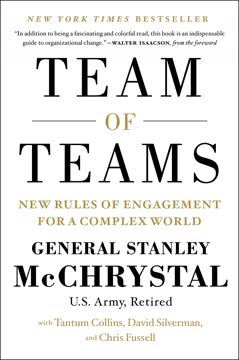
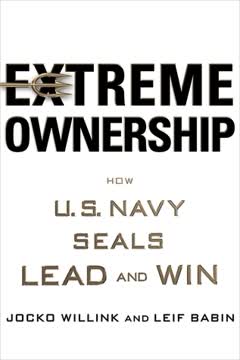
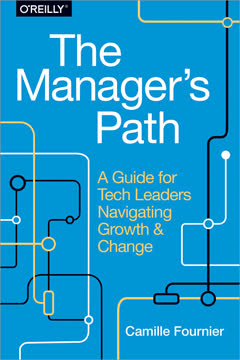
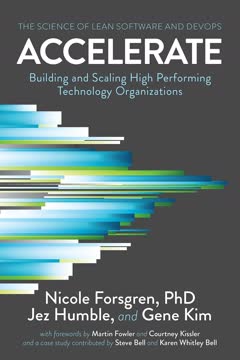

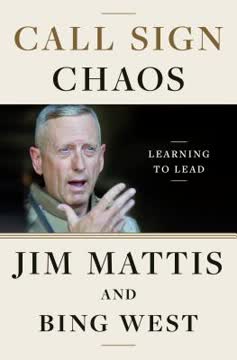
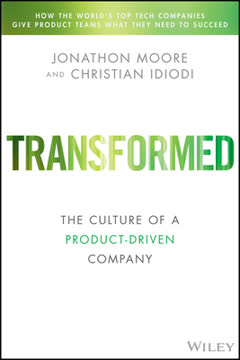
Download PDF
Download EPUB
.epub digital book format is ideal for reading ebooks on phones, tablets, and e-readers.





